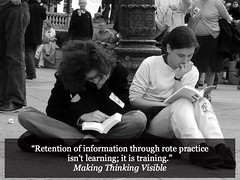Thoughts on reforms in vocational education and training (VET) – Part Three: New emphasis on workplace learning and apprentice training in Finland
In the first post of this series I informed of a new debate on the future course of the Finnish educational policy alongside a the ongoing coalition talks of three parties. The focal issue is seemingly the duration of the initial vocational education and training (VET) programs. With my previous post I gave a picture on the educational policy background for the current debate (looking back to the reforms of the 1990s). With this post I try to complete this picture by discussing the role of workplace learning and apprentice training in the Finnish vocational education and training (VET) system.
1. New emphasis on workplace learning in initial VET programs
I my previous post I described how the shaping of initial vocational education (mainly school-based) became part of a larger reform agenda. The duration of the vocational programs played a role in the attempts to create a balance between ‘academic’ and ‘vocational’ options in the upper secondary education. However, it appeared that this balancing approach put the main emphasis on the desired equality of these options as educational choices. By the end of the 1990s the discussion on initial VET gave more emphasis on workplace learning.
Already in the early 1990s several minor initiatives were taken to increase the amount of work experience placements in the school-based vocational education. By the end of 1990s the educational authorities and the Social Partners had agreed to strengthen the emphasis and to enhance the relative importance of workplace learning. In the new curricular frameworks the amount of workplace-based learning was increased to the equivalent of 1 year in full-time education. The educational authorities spoke of the 2+1 model. For this extension new cooperation frameworks were developed for vocational schools and participating enterprises. In this way both parties took responsibilities on the arrangement and monitoring – although the overarching responsibility was kept at the vocational schools.
Altogether, this was a cultural and organisational reorientation and it was introduced via pilot projects that were accompanied by an educational research project led by the University of Jyväskylä (and by Dr Johanna Lasonen as the key researcher). Looking back, the projects gave a positive picture of the enhancement of workplace learning. At the same time they pointed out that the development of appropriate workplace learning opportunities required efforts from all parties involved.
2. New interest in apprentice training
Parallel to the reforms in initial VET the policy makers who were concerned about appropriate solutions for adult learners had been promoting more flexible arrangements for obtaining vocational qualifications. In this strategy the nation-wide network for vocational adult education centres and the combined schemes of preparatory courses and competence-based assessment had played a central role. Without going into details with this policy development it is worthwhile to note that this approach seemed to be more appropriate for advanced vocational learners who were looking for frameworks for continuing professional development.
In the light of my previous blogs and the above mentioned remarks it is more apparent that the new interest in apprentice training has been linked more to adult learning than initial vocational eduction for youth. Given the scenario that the Finnish society is rapidly aging and that the youth cohorts are getting smaller, there has been an increased concern of providing appropriate learning opportunities for adults who are already in working life but lacking formal qualifications. for this clientele a modern apprentice training with tailored vocational subject teaching appeared to be a timely solution.
The modernisation of apprentice training had already been started in the early 1990s and the support organisation was reformed parallel to organisational reforms in VET. Currently apprentice training is managed from intermediate apprenticeship offices that are located in vocational school consortia and function as the brokers between the interested enterprises and the supporting vocational schools.
As has been mentioned above, apprentice training has been taken up more strongly as an option for adult learners but more recently it has been brought into discussion also as an option for young people. In particular in the construction sector there is a strong interest to promote a flexible transition from the earlier 2+1 model to a variant in which the third year would be implemented as apprentice training. However, as we know from different sources, this requires mutual agreement between different parties involved.
I think this is enough to set the issues of workplace learning and apprentice training to the bigger educational policy context. Having said that I think that it is worthwhile to consider, how this Finnish educational policy context fits to broader European group picture – both concerning structural reforms and the role of workplace learning.
More blogs to come …

